Extra-cardiac findings in cardiovascular magnetic resonance: what the imaging cardiologist needs to know
- PMID: 27156861
- PMCID: PMC4860770
- DOI: 10.1186/s12968-016-0246-1
Extra-cardiac findings in cardiovascular magnetic resonance: what the imaging cardiologist needs to know
Abstract
Cardiovascular magnetic resonance (CMR) is an established non-invasive technique to comprehensively assess cardiovascular structure and function in a variety of acquired and inherited cardiac conditions. A significant amount of the neck, thorax and upper abdomen are imaged at the time of routine clinical CMR, particularly in the initial multi-slice axial and coronal images. The discovery of unsuspected disease at the time of imaging has ethical, financial and medico-legal implications. Extra-cardiac findings at the time of CMR are common, can be important and can change clinical management. Certain patient groups undergoing CMR are at particular risk of important extra-cardiac findings as several of the cardiovascular risk factors for atherosclerosis are also risk factors for malignancy. Furthermore, the presence of certain extra-cardiac findings may contribute to the interpretation of the primary cardiac pathology as some cardiac conditions have multi-systemic extra-cardiac involvement. The aim of this review is to give an overview of the type of extra-cardiac findings that may become apparent on CMR, subdivided by anatomical location. We focus on normal variant anatomy that may mimic disease, common incidental extra-cardiac findings and important imaging signs that help distinguish sinister pathology from benign disease. We also aim to provide a framework to the approach and potential further diagnostic work-up of incidental extra-cardiac findings discovered at the time of CMR. However, it is beyond the scope of this review to discuss and determine the clinical significance of extracardiac findings at CMR.
Keywords: CMR; Cardiovascular Magnetic Resonance; Extra-cardiac findings; Extra-cardiac pathology; Incidental findings.
Figures


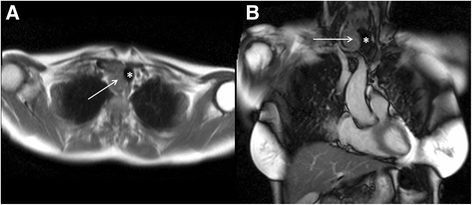

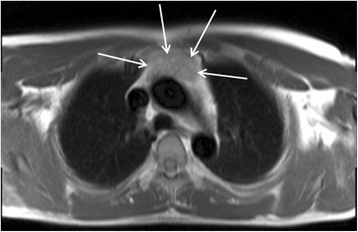


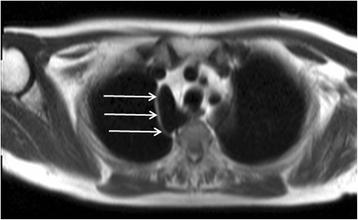
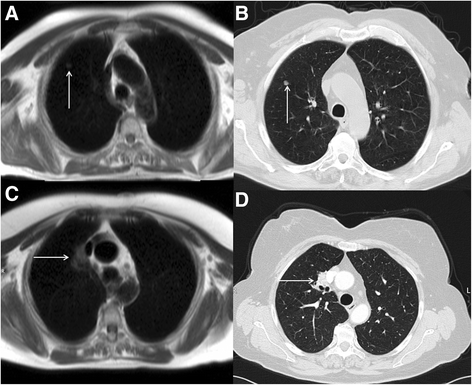




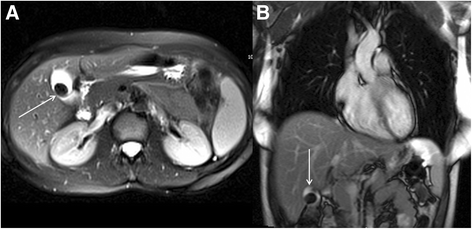
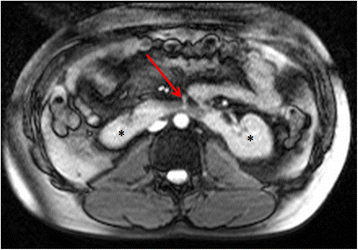





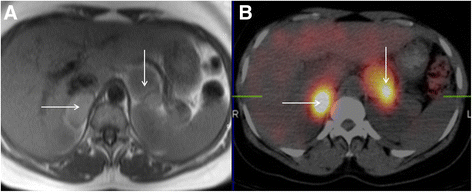





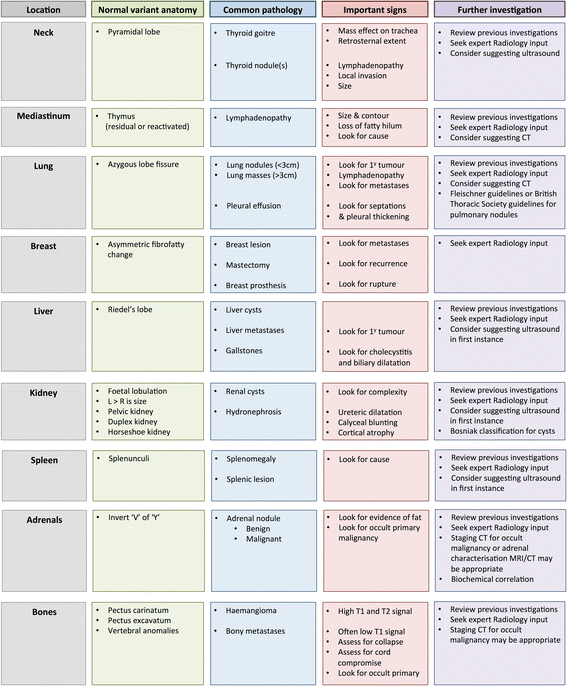
References
-
- Hundley WG, Bluemke DA, Finn JP, Flamm SD, Fogel MA, Friedrich MG, et al. ACCF/ACR/AHA/NASCI/SCMR 2010 expert consensus document on cardiovascular magnetic resonance: a report of the American College of Cardiology Foundation Task Force on Expert Consensus Documents. J Am Coll Cardiol Elsevier Inc. 2010;55(23):2614–2662. doi: 10.1016/j.jacc.2009.11.011. - DOI - PMC - PubMed
-
- McMurray JJV, Adamopoulos S, Anker SD, Auricchio A, Böhm M, Dickstein K, et al. ESC Guidelines for the diagnosis and treatment of acute and chronic heart failure 2012: The Task Force for the Diagnosis and Treatment of Acute and Chronic Heart Failure 2012 of the European Society of Cardiology. Developed in collaboration with the Heart. Eur Heart J. 2012;33(14):1787–1847. doi: 10.1093/eurheartj/ehs104. - DOI - PubMed
-
- Kilner PJ, Geva T, Kaemmerer H, Trindade PT, Schwitter J, Webb GD. Recommendations for cardiovascular magnetic resonance in adults with congenital heart disease from the respective working groups of the European Society of Cardiology. Eur Heart J. 2010;31(7):794–805. doi: 10.1093/eurheartj/ehp586. - DOI - PMC - PubMed
-
- Dunet V, Schwitter J, Meuli R, Beigelman-Aubry C. Incidental extracardiac findings on cardiac MR: Systematic review and meta-analysis. J Magn Reson Imaging. 2015;23. - PubMed
Publication types
MeSH terms
LinkOut - more resources
Full Text Sources
Other Literature Sources
Medical

